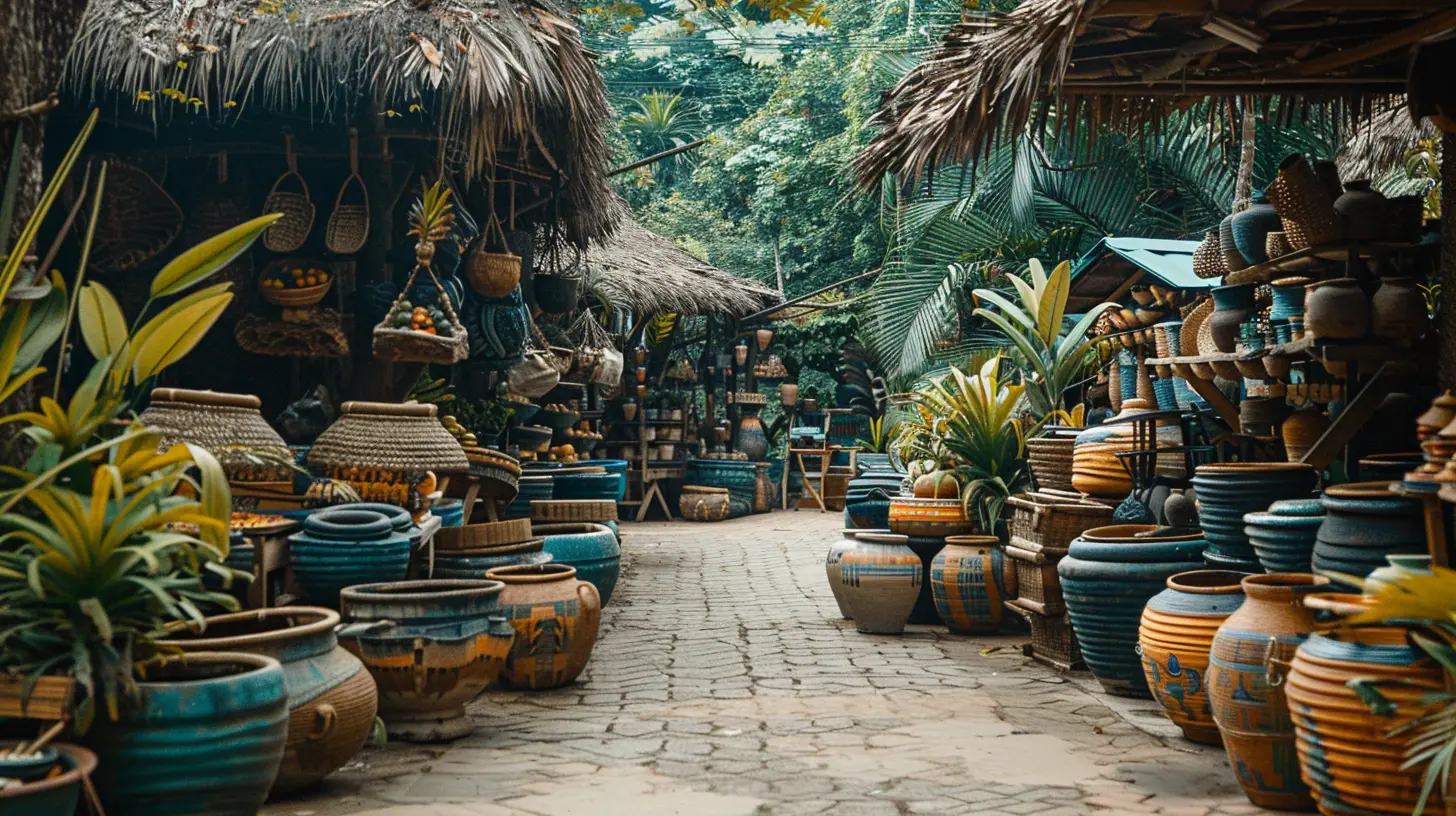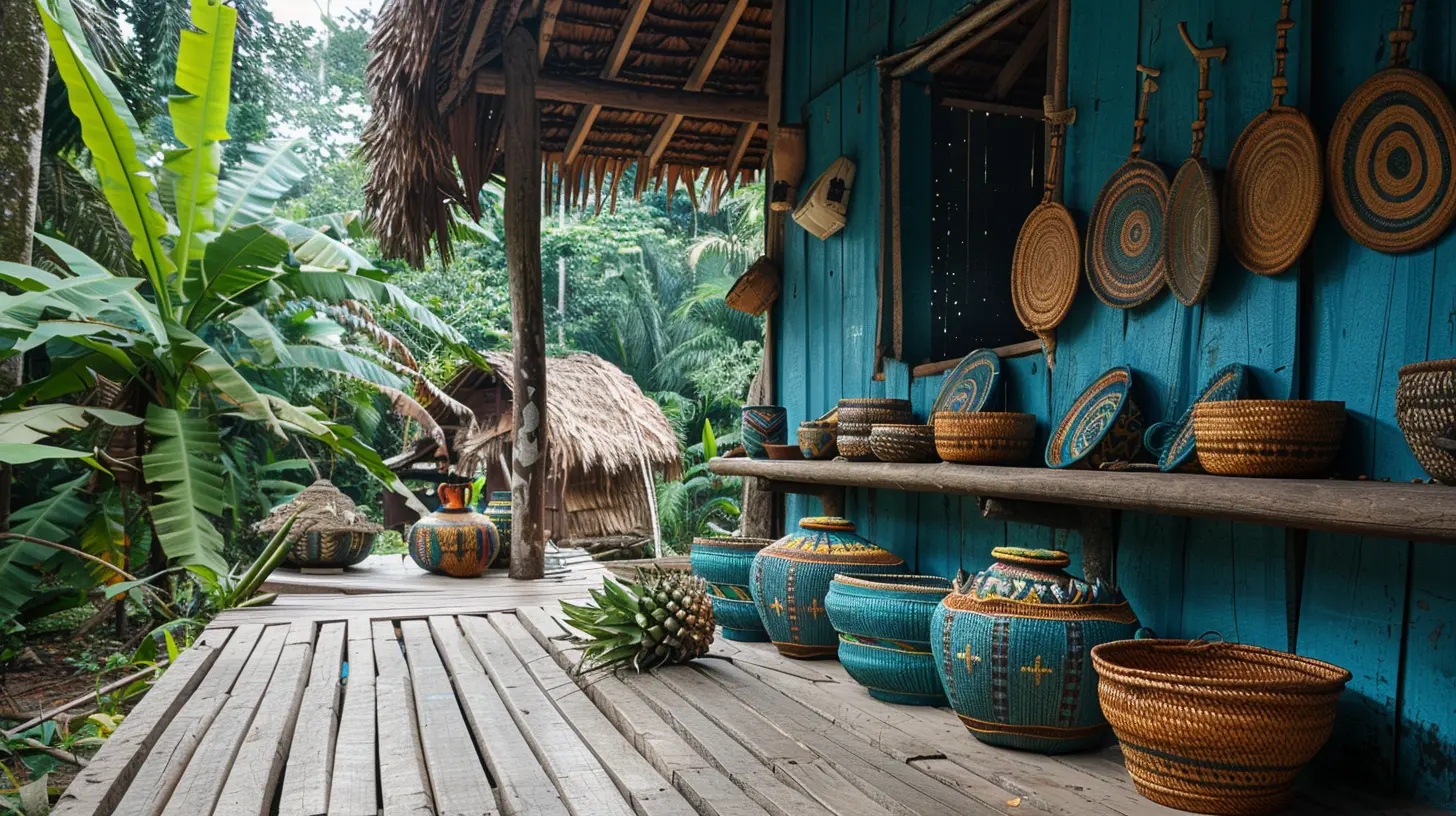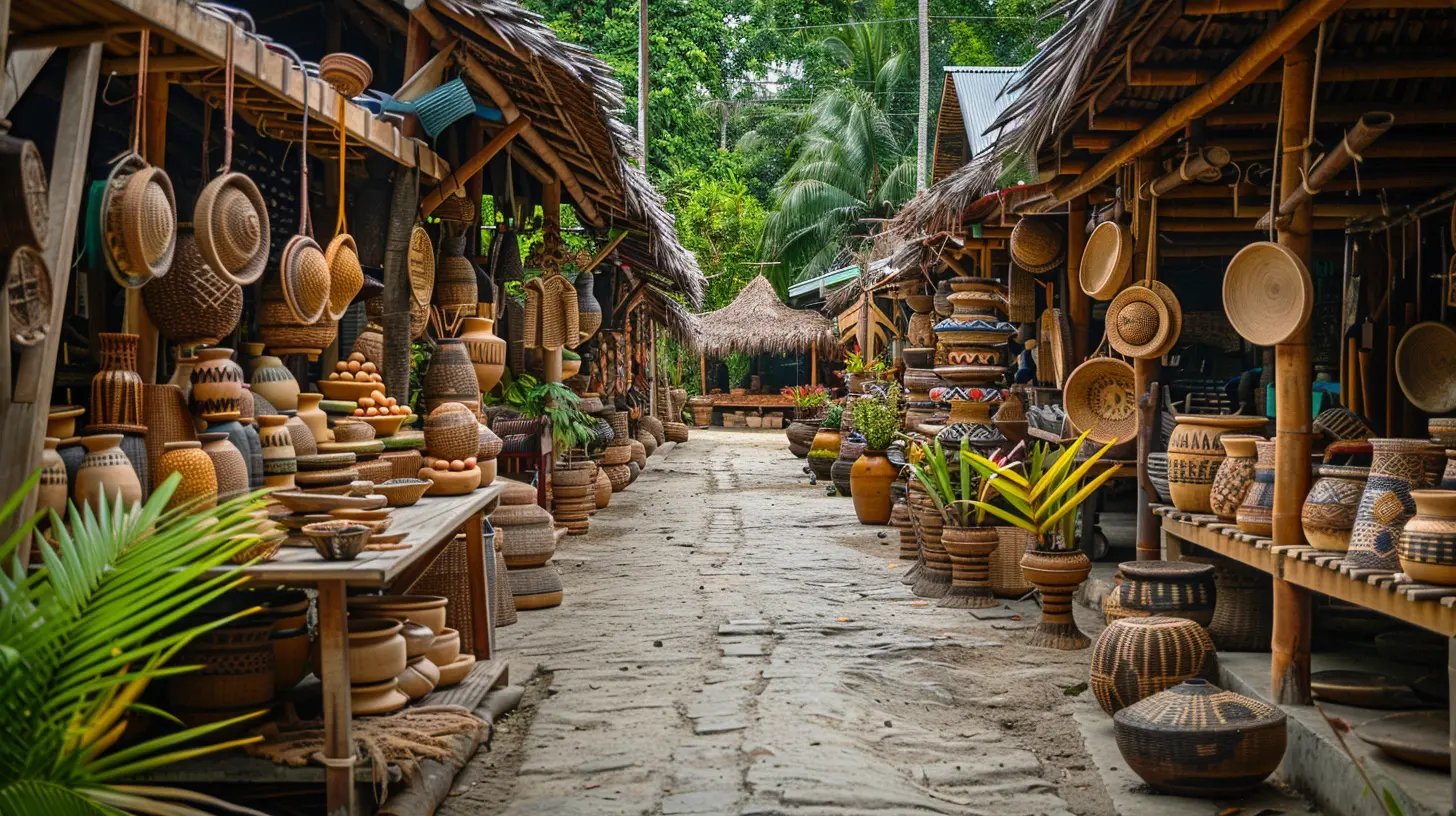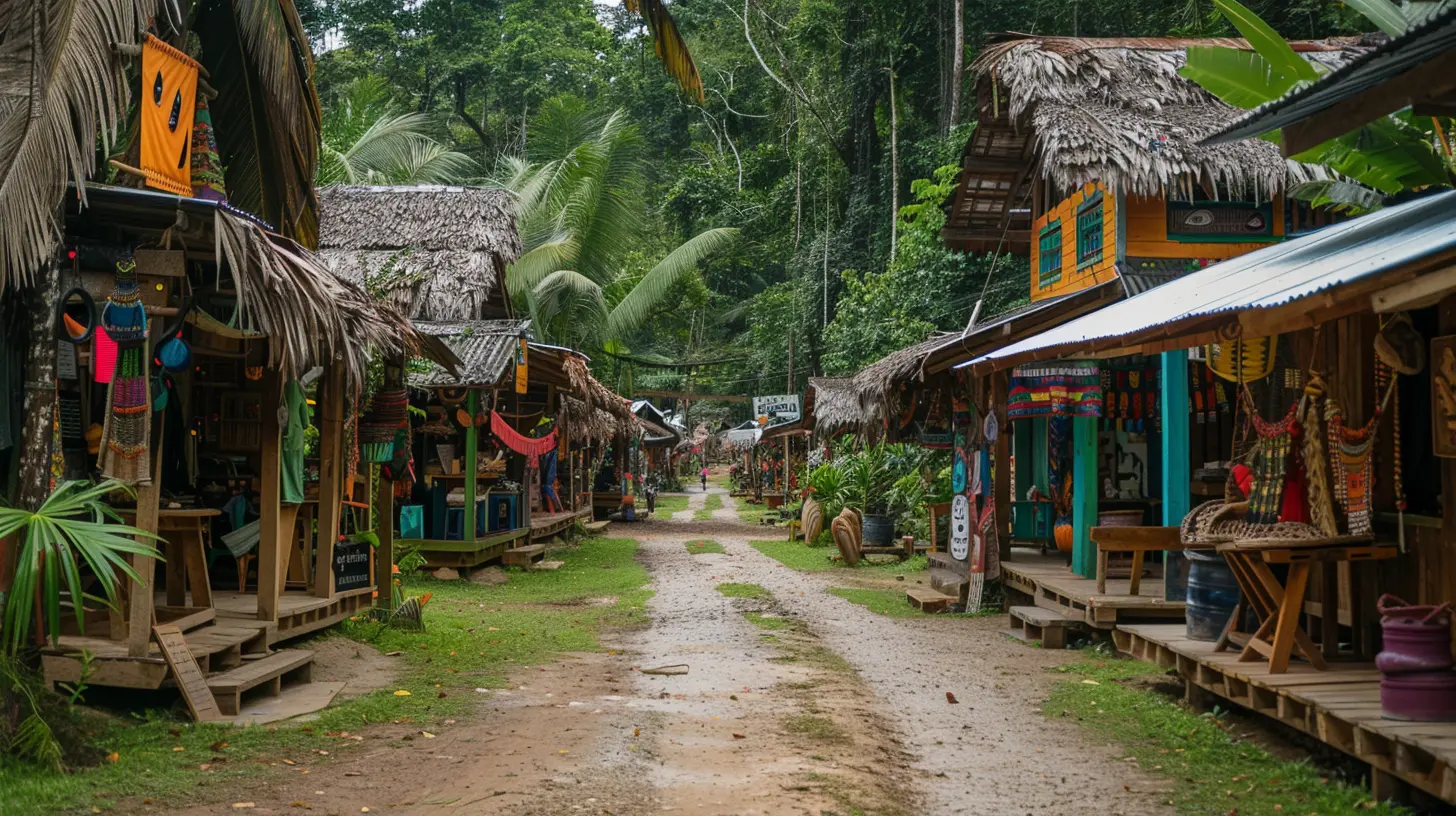Jungle Treasures: Rainforest Markets and Local Craftsmanship
8 June 2025
Picture this—you’re deep in the heart of a lush, green rainforest, the air thick with the scent of damp earth and exotic flowers. Through the canopy, golden rays of sunlight dance on the forest floor. Suddenly, you hear the hum of voices, the rhythmic beating of drums, and the inviting laughter of local artisans showcasing their handiwork. Welcome to the enchanting world of rainforest markets, where nature and craftsmanship intertwine, and every artifact holds a story waiting to be unraveled.

The Hidden Markets of the Rainforest
Rainforest markets aren’t your average shopping spots. They’re vibrant, pulsating hubs of culture, creativity, and heritage. Nestled deep within tropical jungles, these bustling marketplaces offer a rare glimpse into the traditions of indigenous communities, who have been perfecting their crafts for centuries.Unlike modern shopping malls filled with mass-produced goods, rainforest markets are a treasure trove of one-of-a-kind, handcrafted items. From woven baskets and intricately carved figurines to herbal medicines and exotic spices, these markets provide an authentic experience far removed from conventional retail therapy.
But what makes them truly magical? The connection. Every item sold here carries the fingerprints of its creator, the wisdom of ancestors, and the essence of the jungle itself.

Local Craftsmanship: The Heartbeat of the Rainforest
The crafts found in rainforest markets are more than just souvenirs—they're pieces of culture molded by the hands of skilled artisans. Many indigenous groups have passed down their knowledge through generations, ensuring their art remains untouched by time.Handwoven Baskets and Textiles
Ever wondered how a simple palm frond or vine could be transformed into a stunning, durable basket? Indigenous weavers, particularly in the Amazon and Southeast Asian rainforests, have mastered this craft through patience and precision. These baskets aren’t just decorative; they play an essential role in daily life, used for carrying food, storing goods, and even in ceremonial rituals.Then there are the textiles—vibrant, hand-dyed fabrics adorned with intricate patterns. Many of these designs are inspired by nature, depicting animals, plants, and celestial bodies. The process of making these textiles is labor-intensive, often involving natural dyes extracted from plants, fruits, and even insects. The result? Pieces that tell stories in every thread.
Wood Carvings and Sculptures
Walk through any rainforest market, and you’ll find an array of wooden carvings—miniature jaguars, totem-like sculptures, and figures of deities carved with meticulous detail. Each of these wooden works holds spiritual significance; shamans and elders often bless them before they're sold.Many artisans carve using techniques passed down from their ancestors, relying only on basic hand tools and their deep understanding of the wood’s grain. The result? Masterpieces that seem to breathe life into the figures they represent.
Jewelry from Nature’s Bounty
Who needs diamonds when nature offers beads, seeds, and bones? Rainforest artisans create stunning jewelry using materials sourced straight from the jungle—think necklaces crafted from vibrant açaí seeds, bracelets made from coconut shells, and earrings adorned with delicate bird feathers.Each piece is a tribute to nature, symbolizing harmony between humans and the environment. Some are believed to have spiritual properties—amulets to ward off evil, energy-infused talismans, and charms that bring good luck.
Pottery and Ceramics
Shaped from river clay and fired in open-air kilns, rainforest ceramics are as sturdy as they are beautiful. Many pottery pieces are etched with symbols depicting folklore, ancestral wisdom, or the spirits of the jungle. Some are functional—used for cooking or storing water—while others serve as artistic expressions of the local culture.What’s truly remarkable is how these artisans rely on nature for everything—from the clay they mold to the natural pigments they use for decoration.

The Market Experience: A Feast for the Senses
Visiting a rainforest market isn’t just about buying crafts—it’s an experience that immerses you in the very soul of the jungle.The Sights
Imagine a maze of colorful stalls filled with handwoven hammocks, intricate beadwork, and gleaming wooden sculptures. Every corner reveals something new, whether it's a vendor painting designs onto textiles or an old woman crushing rainforest berries into natural dyes.The Sounds
There’s an unmistakable rhythm to rainforest markets—the chatter of vendors bargaining, the distant drumming of a local performance, and the occasional birdcall echoing through the trees. Markets often double as gathering places for celebrations, meaning you may stumble upon a dance performance or a storytelling session recounting ancient myths.The Smells
An intoxicating mix of spices, fresh herbs, and roasted jungle nuts fills the air. You might catch the scent of copal resin burning—traditionally used in spiritual ceremonies—or the sweet aroma of tropical fruit being peeled and prepared.The Taste
Speaking of food, no trip to a rainforest market is complete without sampling the local cuisine. Vendors often sell traditional snacks made from jungle ingredients—cassava bread, grilled plantains, and spicy stews infused with exotic herbs. And don’t forget to sip on a refreshing cup of chicha, a fermented drink made from maize or yucca.
Sustainability and Ethical Shopping
While supporting rainforest artisans is a fantastic way to preserve indigenous traditions, it’s equally important to ensure that what you buy aligns with ethical and sustainable practices.Respect for Nature
Many indigenous groups practice sustainable harvesting, ensuring they don’t deplete natural resources. When purchasing items made from wood, seeds, or animal products, always ask how they were sourced. Ethical artisans will be happy to explain their eco-friendly methods.Fair Trade Over Mass Production
Some middlemen exploit indigenous artists by selling their work for inflated prices while paying the creators next to nothing. Buying directly from artisans ensures they receive fair compensation for their craftsmanship. Look for fair trade labels or, even better, engage with the artists themselves.Avoiding Illicit Wildlife Trade
Some markets may sell illegal wildlife products—everything from jaguar teeth to turtle shells. Purchasing such items fuels harmful poaching and habitat destruction. Always opt for products made from sustainable, non-endangered materials.Why Rainforest Markets Are Worth the Journey
So, why go out of your way to visit these hidden gems? Because a rainforest market isn’t just a shopping trip—it’s a gateway into the beating heart of a community. Every piece you bring home carries a slice of the jungle’s spirit, a whisper of ancient traditions, and a bond between you and the hands that created it.It’s a rare opportunity to slow down, immerse yourself in a different way of life, and appreciate the beauty of handmade artistry in an age of factory-produced monotony. In a world constantly chasing convenience, rainforest markets remind us to celebrate craftsmanship, culture, and connection.
So, next time you find yourself venturing into the depths of a jungle, don’t just admire the trees—seek out the treasures they hide within. You might just walk away with something far more valuable than a souvenir: a story.
all images in this post were generated using AI tools
Category:
Rainforest ToursAuthor:

Claire Franklin
Discussion
rate this article
3 comments
Quinn McGinnis
Who needs Amazon Prime when you can explore real Amazon treasures? Shop local, eat exotic, and leave with unforgettable memories!
June 19, 2025 at 3:04 PM

Claire Franklin
Absolutely! Exploring local markets offers a unique experience and supports artisans while creating lasting memories. Nature’s treasures await outside the online shopping cart!
Harrison McCabe
In vibrant canopies beneath emerald skies, treasures bloom—market whispers weave tales of craftsmanship, where nature and art entwine in harmony.
June 18, 2025 at 2:26 AM

Claire Franklin
Thank you for your beautiful imagery! It perfectly captures the essence of our vibrant rainforest markets and the artistry that thrives within them.
Faryn McKellar
This article beautifully captures the vibrant culture of rainforest markets, highlighting the unique craftsmanship of local artisans. The vivid descriptions and engaging narratives inspire a deeper appreciation for both the treasures of the jungle and the communities that sustain them.
June 8, 2025 at 3:20 AM

Claire Franklin
Thank you for your kind words! I'm glad the article resonates with you and highlights the rich culture and craftsmanship of rainforest markets.



